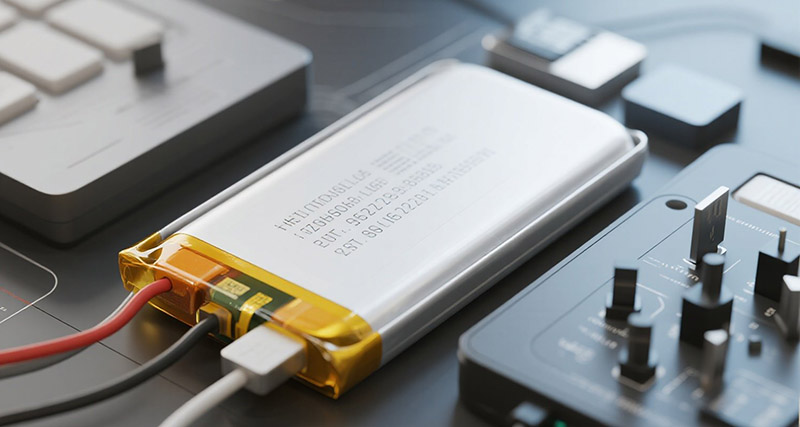Semi-solid-state batteries, as a bridging technology between traditional liquid lithium-ion batteries and all-solid-state batteries, are gaining attention in the new energy sector due to their balanced performance and mass production feasibility. This article systematically explains the technical principles, core advantages, application scenarios, and purchasing advice of semi-solid-state batteries, providing comprehensive reference for readers.

A semi-solid-state battery is a new type of battery technology that uses a "liquid + solid" hybrid electrolyte. Its core feature is a significantly reduced proportion of liquid electrolyte (usually less than 50%), forming a semi-fluid system by introducing solid electrolytes (such as polymer gels, inorganic ceramics, or sulfides). This design retains the ion conduction efficiency of traditional liquid batteries, solves safety hazards like leakage and explosion through solid components, and lays a technical foundation for the transition to all-solid-state batteries.
Compared with traditional batteries, the structural innovations of semi-solid-state batteries are reflected in three aspects:
1. The electrolyte changes from "pure liquid" to "liquid-solid composite system", reducing dependence on separators;
2. It can be paired with high-capacity electrode materials (such as metallic lithium anodes and nickel-rich ternary cathodes) to break the energy density bottleneck;
3. The interface impedance is lower, and the charge transfer efficiency is higher.
Technology Type |
Electrolyte Form |
Energy Density (Wh/kg) |
Safety |
Mass Production Cost |
Representative Application Scenarios |
Traditional Liquid Lithium Battery |
Liquid Organic Electrolyte |
200-300 |
Low (prone to leakage and explosion) |
Low |
Ordinary power banks, low-end electric vehicles |
Semi-Solid-State Battery |
Liquid-Solid Hybrid Electrolyte |
400-500 |
High (suppresses lithium dendrites) |
Medium |
High-end power banks, long-range electric vehicles |
All-Solid-State Battery |
Fully Solid Electrolyte |
500-1000+ |
Ultra-high (no liquid components) |
High |
Laboratory stage, future electric vehicles |
Key Advantage Comparison:
• Safety: The reduced liquid content in semi-solid-state batteries reduces the risk of explosion by over 80%, with a significantly higher pass rate in needle puncture and fire tests compared to traditional batteries;
• Energy Density: For the same volume, the capacity of semi-solid-state batteries is 20%-50% higher than traditional batteries, enabling a leap in device endurance;
• Cost Controllability: Retaining part of the liquid electrolyte eliminates the need to completely transform traditional production lines, with mass production costs only 1/3-1/2 of all-solid-state batteries.

1. Smartphones
2. Power Banks
1. Long-Distance Travel and Outdoor Adventures
The high energy density feature reduces the weight of 10000mAh semi-solid power banks to below 180g (traditional products about 250g), which can be easily put into backpacks; the wide temperature range design (-20℃ to 80℃) ensures stable power supply in extreme environments such as snow mountains and deserts.
2. Business Travel and Trips
Improved safety allows it to be carried directly on airplanes (no separate declaration required), supports fast charging of multiple devices (e.g., Kuxiu S2 can charge mobile phones, earphones, and watches at the same time), simplifying travel equipment.
3. Low-Temperature Working Scenarios
In low-temperature environments such as winter outdoors and cold storage, the capacity retention rate of semi-solid-state batteries is more than 40% higher than that of traditional power banks, suitable for industries such as photography and surveying.
4. High-End Digital Equipment Supporting
Compatible with power-consuming devices such as foldable screen mobile phones and professional cameras. For example, vivo X Fold5 paired with the same brand's semi-solid-state power bank can double the "device + power bank" dual battery life.
1. Energy Density: Priority is given to products with 800Wh/L or more (such as Kuxiu S2 with 860Wh/L), which have larger capacity for the same volume;
2. Fast Charging Protocol: Supports mainstream fast charging standards such as PD3.1 and QC5, and the power is recommended to be 20W or more (to meet the fast charging needs of mobile phones);
3. Cycle Life: Choose products with 80% capacity retention after 1000 cycles (about 500 cycles for ordinary power banks), which are more cost-effective for long-term use.
Check for UN38.3 (air transport), IEC 62133 (battery safety), needle puncture/squeeze test certifications, and avoid purchasing unqualified "concept products".
• Multi-interface design: At least 1 USB-C (input + output) and 1 USB-A interface to meet the needs of different devices;
• Magnetic attraction function: Products supporting MagSafe (such as Kuxiu S2) can be adapted to iPhones, AirPods and other devices for more convenient charging;
• Intelligent protection: Equipped with overcharge, over-temperature, and short-circuit protection. Some high-end products also support APP power monitoring.
Currently, the price range of semi-solid-state battery power banks is 200-500 yuan (10000mAh). If the budget is limited, you can choose cross-border brands such as Jindian High-Tech; for ultimate performance, professional manufacturers such as Hamaken Works and Kuxiu are recommended.
In the short term (2025-2027), semi-solid-state batteries will move towards "high solidification", with the proportion of liquid electrolyte dropping to below 20% and energy density exceeding 600Wh/kg; in the medium term (2028-2030), costs are expected to be on par with traditional batteries, becoming the mainstream choice for consumer electronics and new energy vehicles; in the long term, they will gradually transition to all-solid-state batteries, ultimately achieving the ultimate goal of "no liquid, ultra-safe, ultra-high capacity".
For consumers, the popularization of semi-solid-state batteries means an overall upgrade in device battery life, safety, and charging efficiency. Choosing mature brand semi-solid-state power banks at this stage can not only enjoy technical dividends in advance but also prepare for future device upgrades.